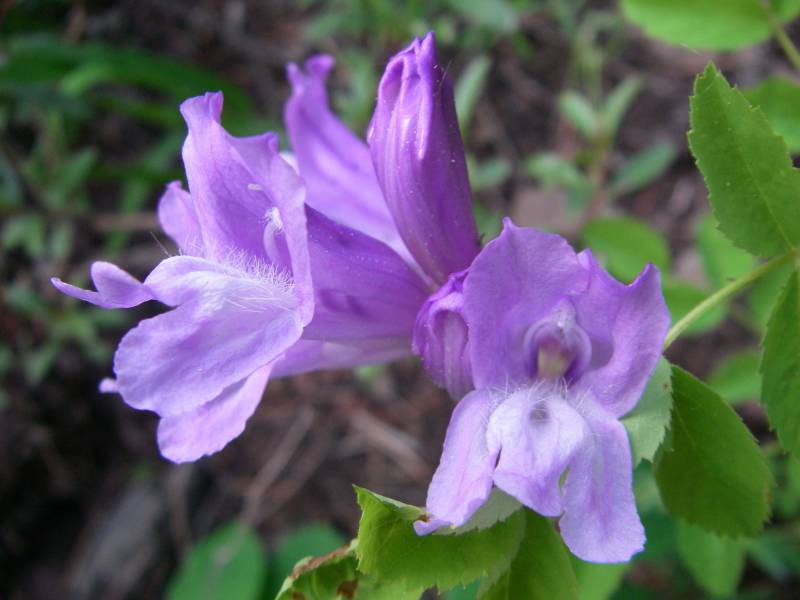Penstemon fruticosus
Penstemon speciosus
bush penstemon, shrubby penstemon
royal beardtongue, showy penstemon
Leaves opposite, the larger leaves crowded toward the base of the season\\\\'s growth on short, sterile shoots, the blades entire or toothed, up to 6 cm. long and 1.5 cm. wide, short-petiolate; flowering shoots with reduced and less-crowded leaves.
Leaves opposite, entire, thick and firm, the basal ones clustered, petiolate, up to 15 cm. long and 2 cm. wide, the blade oblanceolate to narrowly elliptic;
cauline leaves sessile and sometimes clasping, up to 2 cm. wide, 3.5-10 times as long as wide.
Inflorescence a short, few-flowered, bracteate raceme, with simple, axillary pedicels;
calyx 7-15 mm. long, with 5 lanceolate, long-acuminate segments;
corolla blue-lavender to light purplish, 30-50 mm. long, 1 cm. wide at the mouth, keeled on the back, glabrous outside, with long, white hairs on the base of the lower lip within;
anthers long-woolly, the pollen sacs wholly dehiscent and opening wide enough to form a plane;
staminode slender, shorter than the 4 fertile filaments, long-bearded toward the tip.
Inflorescence of numerous, loose verticillasters, sometimes one-sided;
calyx 4-8 mm. long, the 5 segments ovate, scarious margined, pointed;
corolla bright blue, 26-38 mm. long, 1 cm. wide at the mouth;
pollen sacs 1.9-3.0 mm. long, spreading, S-shaped, mostly glabrous, a short portion remaining indehiscent;
staminode usually glabrous.
Capsules 8-12 mm. long.
Capsule 9-12 mm. long.



